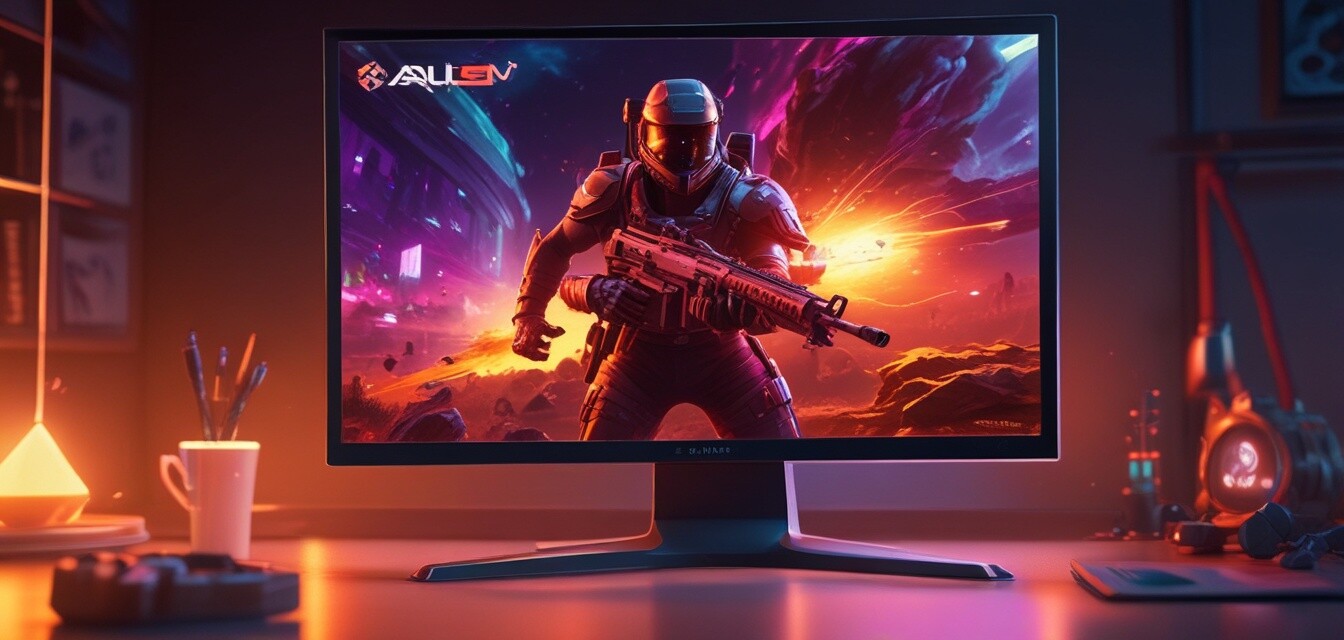
Evaluating Refresh Rates in OLED Monitors
- Refresh rate is crucial for smooth gameplay and visual experience.
- Higher refresh rates benefit competitive gamers significantly.
- Consider your gaming style when choosing the right refresh rate.
- Synchronizing frame rates with G-Sync & FreeSync technology improves performance.
- Understanding compatibility with your console/PC is key for optimal use.
When it comes to selecting an OLED monitor for gaming, one of the most critical factors to consider is the refresh rate. This article explores refresh rates in OLED monitors, discussing their importance in gaming performance and providing recommendations based on different gaming styles.
What is refresh rate?
The refresh rate of a monitor is defined as the number of times per second that the image on the screen is updated, measured in Hertz (Hz). For example, a monitor with a refresh rate of 60Hz updates its image 60 times per second, while a monitor with a 144Hz refresh rate updates its image 144 times per second. This specification plays a pivotal role in determining how smooth and fluid the motion appears on the screen.
Why refresh rates matter in gaming
In gaming, especially fast-paced titles, refresh rates affect the responsiveness and fluidity of your visual experience. Here are some key implications of different refresh rates:
| Refresh Rate | Best for | Description |
|---|---|---|
| 60Hz | Casual gaming | Good for less graphic-intensive games; decent performance. |
| 120Hz | Competitive gaming | Offers smoother motion and reduced input lag. |
| 144Hz | Professional gaming | Highly responsive with minimal motion blur; ideal for FPS titles. |
| 240Hz | Esports | The optimal choice for esports players, providing the smoothest experience. |
Understanding different gaming styles
Your gaming preferences play a significant role in determining the refresh rate that suits you best. Let’s break down some popular gaming styles and the corresponding recommended refresh rates:
- Casual gamers: If you enjoy platformers, RPGs, or puzzle games, a refresh rate of 60Hz or 120Hz is often sufficient, as these games don't demand rapid motion rendering.
- Competitive gamers: Players engaged in first-person shooters (FPS) or racing games will benefit from a minimum of 144Hz for an edge over opponents. Fluid motion helps in quicker reflexes.
- Action gamers: For fast-paced, action-packed titles, aiming for monitors with 240Hz refresh rates allows for superior performance and a competitive advantage.
- Streamers: If you stream your gameplay, consider monitors with at least 120Hz refresh rates since smooth visuals will enhance the viewing experience for your audience.
Frame synchronization technology
Integrating technologies like G-Sync or FreeSync can effectively improve your gaming experience by synchronizing the refresh rate of the monitor with the graphics card’s output. This eliminates screen tearing and stuttering, making everything feel more seamless, especially at high refresh rates. Check out our detailed articles on G-Sync & FreeSync OLED monitors to understand how these technologies can enhance your gaming setup.
Compatibility with your hardware
Before opting for a high refresh rate OLED monitor, ensure it is compatible with your gaming console or PC specs. Higher refresh rate monitors typically require robust GPUs or consoles capable of delivering adequate frame rates. A mismatch can lead to underutilizing the monitor's capabilities, so keep this factor in mind as you shop.
"A monitor is only as good as the graphics it receives. Make sure your hardware can keep up with your display."
Final thoughts on choosing an OLED monitor
The right refresh rate can significantly enhance your gaming experience, ensuring that you enjoy fluid motion, quick responsiveness, and a competitive edge when needed. Remember to factor in your gaming style, synchronization technology, and hardware compatibility when making your choice. For more insights, check out our Buying Guides for OLED gaming monitors.
Pros
- High refresh rates enhance fluidity and responsiveness in gameplay.
- Greater refresh rates reduce motion blur and screen tearing.
- Offers an advantage in competitive gaming environments.
Cons
- Higher refresh rate monitors can be more expensive.
- May require more powerful hardware to fully utilize.
- Not all games benefit from very high refresh rates.
Key recommendations
- Casual gamers should prioritize refresh rates of 60Hz-120Hz.
- Competitive gamers will benefit significantly from 144Hz-240Hz displays.
- Consider additional technology integrations like G-Sync/FreeSync for the best experience.
- Review your hardware capabilities to avoid compatibility issues.
By understanding these elements, you can confidently choose the ideal OLED gaming monitor that caters to your unique gaming needs. Explore our range of 4K OLED gaming monitors this season to elevate your gameplay.